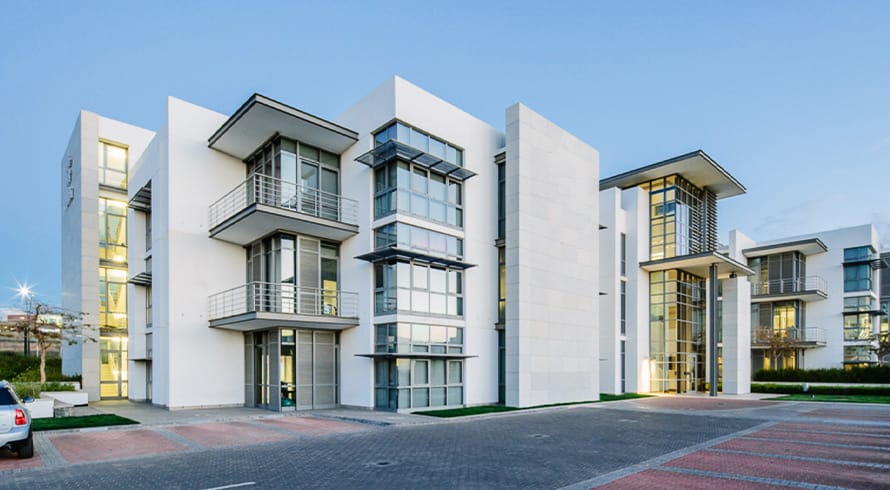Transfer pricing has finally washed up on South Africa’s shores
At a glance
- In a moment that many tax practitioners have eagerly awaited, the Tax Court finally passed down its first judgment dealing with transfer pricing in the case of ABD Limited v Commissioner, SARS (IT14302).
- Between 2009 and 2012, the taxpayer licensed its intellectual property to subsidiaries operating in various other countries (opcos) against payment by these opcos of a royalty. For all of these opcos, this royalty was charged at the same flat rate of 1%.
- The South African Revenue Service (SARS) took the view that this 1% royalty was, in fact, not arm's length and should have been higher. However, the Tax Court found in favour of the taxpayer.
This global move has been spearheaded by the Organisation for Economic Co-Operation and Development (OECD) through its Base Erosion and Profit Shifting (BEPS) project. Although not a member of the OECD, South Africa has followed this trend and intends being a part of the BEPS project (which we recently covered here).
To address transfer pricing directly, South Africa has enacted section 31 of the Income Tax Act 58 of 1962 (ITA). Linked to this, the South African Revenue Service (SARS) published its Interpretation Note 127 last year on thin capitalisation and the application of transfer pricing rules to inter-company loans (which we discussed here). This points to SARS targeting transfer pricing (and by all accounts it has), but this has yet to surface in the public eye. That is, until now.
In a moment that many tax practitioners have eagerly awaited, the Tax Court, sitting in Johannesburg, finally passed down its first judgment dealing with transfer pricing in the case of ABD Limited v Commissioner for the South African Revenue Service (14302) [2024] ZATC 2 (14 February 2024). Not only is this a watershed moment for the tax profession in South Africa, but the Tax Court’s decision in ABD Limited serves as a useful guide to the basics of transfer pricing within the context of South African tax law.
The concept of transfer pricing
The Tax Court explained the concept of transfer pricing as being the pricing of goods and services between companies under common control. At its most basic, this concerns the price one entity charges another entity for goods and services, where both entities form part of the same group of companies or are otherwise associated or connected with each other but are situated in different countries.
As pointed out above, and in ABD Limited, transfer pricing opens the door to one company operating in a low-tax country to over-charge for a good or service which it supplies to a related company operating in a high-tax country. The result is that the company in the high-tax country will shift a portion of its profits to the low-tax country because of the high price being charged by the related company situated there.
Therefore, the key to transfer pricing is ensuring that related companies (or entities) price goods and services between them at arm’s length. Simply put by the Tax Court in ABD Limited, arm’s length prices are those that would be charged between two independent companies (as opposed to a company situated and taxed in one country, and its subsidiary situated and taxed in another).
The Background to ABD Limited
The taxpayer in ABD Limited was a telecommunications company situated in South Africa, but with subsidiaries operating in various other countries (opcos). Between 2009 and 2012, the taxpayer licensed its intellectual property to these opcos against payment by these opcos of a royalty. For all of these opcos, this royalty was charged at the same flat rate of 1%.
The taxpayer had chosen this royalty rate on the advice of an independent external consultancy which had researched the most appropriate arm’s length rate at which to charge the royalty and presented this research to the taxpayer. SARS, however, took the view that this 1% royalty was, in fact, not arm’s length and should have been higher. Therefore, relying on section 31 of the ITA, SARS raised additional assessments for the taxpayer’s 2009 to 2012 tax years.
Initially in coming to its conclusion (and raising the additional assessments), SARS relied on an expert report it had commissioned. However, during the course of proceedings before the Tax Court, SARS retained the services of a second expert who recommended that SARS adjust the royalty rate even further. This second expert’s opinion was based on his view that the taxpayer should have charged a variable royalty rate based on both the relevant economic factors for the year in which the royalty was charged, and the country in which a specific opco was situated.
SARS’ change in expert led the taxpayer to argue that SARS was “flip-flopping” and also challenged the additional assessments on procedural grounds. The Tax Court did not come to a decision on the procedural arguments but decided to consider the case on its merits.
Profit shifting
Firstly, the Tax Court pointed out that there was no motivation or rationale for the taxpayer to charge the opcos an artificially low royalty rate. This is because the countries in which the opcos operated had (by and large) tax rates equal to or in excess of South Africa’s tax rate and it was therefore not necessarily more beneficial for the taxpayer to charge lower royalty rates as its effective tax rate across jurisdictions would remain similar (if not the same). Furthermore, there were also minority shareholders of the opcos that would benefit from more of the profit generated by those opcos being retained in the opcos, which would not likely be the taxpayer’s intention.
Although SARS contended that this was an irrelevant consideration, and the Tax Court agreed to some extent, arguably there was nevertheless some weight attached to it for the reason that this pointed towards the taxpayer’s genuine reliance on the report presented to it by the independent external consultancy. Further, the Tax Court found that there were sound commercial reasons for the taxpayer adopting a flat royalty rate across all the opcos.
The arm’s length principle
Focusing on the issue of transfer pricing itself, and given the lack of case law, both sides placed great reliance on the Transfer Pricing Guidelines for Multinational Enterprises and Tax Administration (Guidelines) published by the OECD. The court referred to the definition of arm’s length pricing from these Guidelines, and also the approach to testing what an arm’s length price would be in a specific situation.
Two of these approaches were used by the taxpayer to justify its choice of royalty rate: the Transactional Profit Split Method (TPSM) and the Comparable Uncontrolled Price Method (CUP). SARS relied on the TPSM.
As set out by the Tax Court, the Guidelines define the TPSM as:
“[identifying] the relevant profits to be split for the associated enterprises from a controlled transaction … and then splits those profits between the associated enterprises on an economically valid basis that approximates the division of profits that would have been agreed at arm’s length.”
The CUP on the other hand is defined in the Guidelines as:
“[Comparing] the price paid for property or services transferred in a controlled transaction to the price charged for property or services transferred in a comparable uncontrolled transaction in comparable circumstances.”
The Tax Court commented that the transfer pricing study presented by the taxpayer using the TPSM was not always necessarily well suited for intangible assets such as intellectual property (which was the subject of the royalty rate in question in ABD Limited). It therefore did not make a finding on this method as presented by the taxpayer, and rather considered the CUP analysis presented by the taxpayer.
In particular, the Tax Court decided to consider the CUP analysis as it found that there was a similar transaction, involving the same intellectual property, which the taxpayer had concluded previously with an unrelated company. SARS challenged the reliance on this method on the basis that the previous transaction was not comparable, and thus inapplicable.
The Guidelines set out a number of relevant factors for consideration when determining comparability between transactions. The Tax Court pointed out that these included:
- the contractual terms of each transaction;
- the assets and risks involved in each transaction;
- the characteristics of the property transferred in each transaction;
- the economic circumstances of the parties in each transaction; and
- the business strategies pursued by the parties in each transaction.
The Tax Court also pointed out that, despite these factors, the Guidelines provide that differences between transactions do not render them incomparable if these differences can be measured and thus accounted for. Further, in the specific transaction used by the taxpayer for the CUP analysis in ABD Limited, the taxpayer’s expert argued that any differences between that transaction and the transaction with the opcos in question were immaterial to the royalty rate applied.
Although arguing that each individual opco could not be compared with the unrelated party from the previous transaction used for the CUP analysis, SARS’ own expert admitted that the opcos could be analysed collectively due to their comparable functional profiles. Therefore, the Tax Court found that the previous transaction entered into by the taxpayer with an independent third party was comparable and thus relevant to the CUP analysis.
The data underpinning SARS’ TPSM method
Turning to SARS’ reliance on the TPSM method, the Tax Court found that when SARS conducted its own TPSM analysis, its second expert used an incorrect understanding of the taxpayer’s intellectual property that was licensed to the opcos. SARS’ second expert developed a ‘willingness to pay’ (WTP) test to determine an arm’s length royalty. This test involved an assessment of what premium a customer would be willing to pay to use the taxpayer’s branded product, as opposed to a comparative product from an unknown third party.
This WTP test, however, was measured using the taxpayer’s full brand (i.e. predicated on the taxpayer having licensed its complete brand, including goodwill, to the opcos). In reality, the taxpayer had only licensed its trademark to the opcos, and specifically excluded its goodwill. This meant that the basis of the TPSM analysis relied upon by SARS was incorrect. The Tax Court also raised questions regarding the applicability of the WTP test in a transfer pricing context.
In light of this, the Tax Court decided that the most persuasive analysis presented to it had been the one using the CUP method, which was based on the previous licensing agreement which the taxpayer had entered into with an independent third party. The royalty rate in that agreement had also been 1%, and therefore the Tax Court found in favour of the taxpayer.
Costs
On the question of costs, the Tax Court accepted that this had to be decided in terms of the Tax Administration Act 28 of 2011 (where costs do not necessarily follow an order). Nevertheless, on this metric, the Tax Court found that SARS had been unreasonable with its ‘flip-flop’ between experts, and the taxpayer was thus entitled to a cost order in its favour.
Next steps
With transfer pricing as the next frontier of the South African tax landscape (and with the potential for additional assessments for multinationals in the face of a cash-strapped fiscus), SARS’ loss on the first transfer pricing issue to reach the Tax Court will undoubtably be a disappointment to it (which the Tax Court observed in ABD Limited).
Given what’s at stake, however, SARS will potentially appeal this decision. Considering that Tax Court decisions are not binding, a judgment given by a High Court, or the Supreme Court of Appeal (SCA), would be invaluable. Similar to other contentious tax issues currently before our courts, clarity on the interpretation and application of complex tax provisions such as transfer pricing is in the best interests of SARS and taxpayers. If the Tax Court grants SARS leave to appeal directly to the SCA, it remains to be seen whether the SCA decides in SARS’ favour, which it has done in most tax cases it has heard in recent years. If leave to appeal directly to the SCA is not granted, the appeal would be heard by the Gauteng Division of the High Court (typically a full bench of three judges) and depending on the outcome in the High Court, the matter could be appealed to the SCA. Given the recent increase in tax cases being heard by the Constitutional Court (including the 2024 hearings in the Thistle Trust and Coronation cases), it may be that it has the final say in the matter. Therefore, some patience may be required before absolute certainty is achieved, and the matter has run its course.
Hopefully, the outcome of this case will give better insight into the application of transfer pricing principles in a South African context, thereby enabling better certainty for taxpayers and SARS in a complex area of tax law. Aside from the fact that the current matter could come before higher courts, taxpayers must appreciate that there are many different types of transfer pricing cases. For example, a case such as this one dealing with the application of transfer pricing to royalties is unlikely to play out in the same way as one dealing with the cross-border supply of other goods and services. While the judgment in ABD Limited is certainly groundbreaking considering its novelty (and has elicited excitement amongst the tax advisory community), only time will tell how the courts apply the transfer pricing rules in different contexts.
The information and material published on this website is provided for general purposes only and does not constitute legal advice. We make every effort to ensure that the content is updated regularly and to offer the most current and accurate information. Please consult one of our lawyers on any specific legal problem or matter. We accept no responsibility for any loss or damage, whether direct or consequential, which may arise from reliance on the information contained in these pages. Please refer to our full terms and conditions. Copyright © 2026 Cliffe Dekker Hofmeyr. All rights reserved. For permission to reproduce an article or publication, please contact us cliffedekkerhofmeyr@cdhlegal.com.
Subscribe
We support our clients’ strategic and operational needs by offering innovative, integrated and high quality thought leadership. To stay up to date on the latest legal developments that may potentially impact your business, subscribe to our alerts, seminar and webinar invitations.
Subscribe




